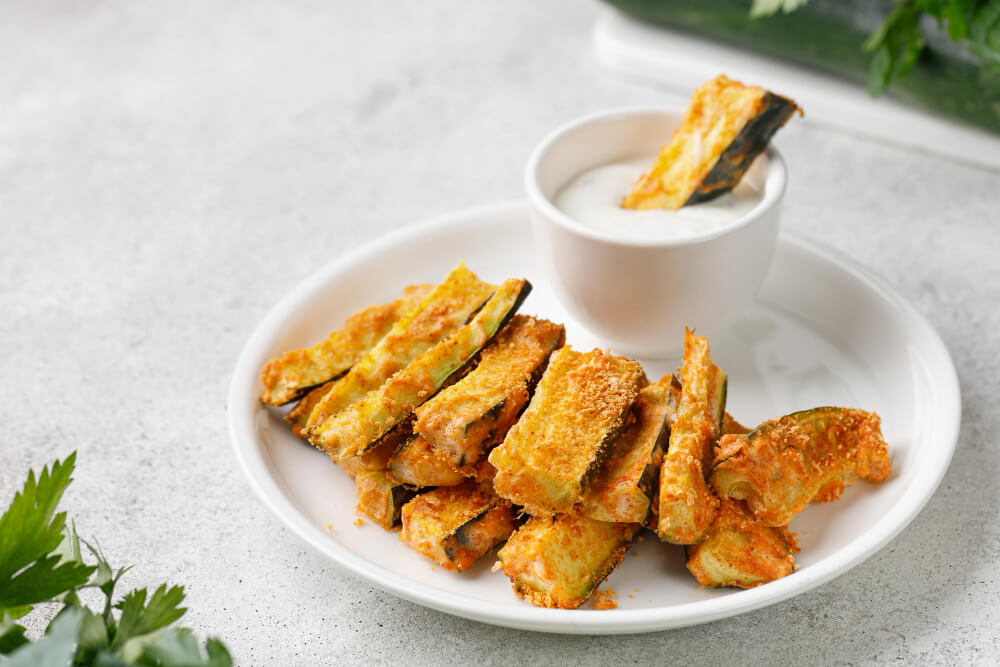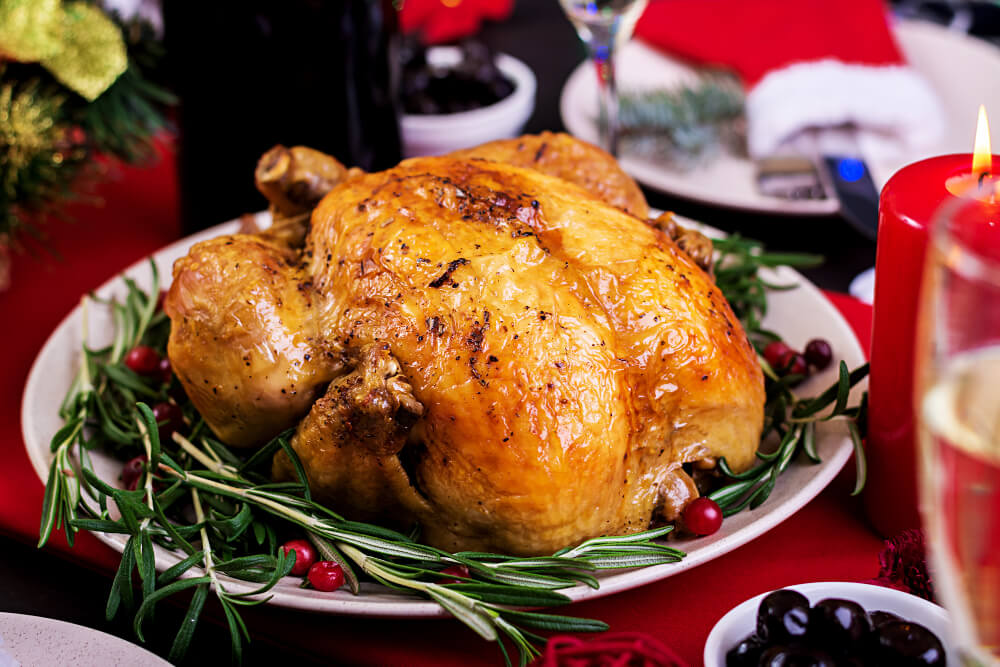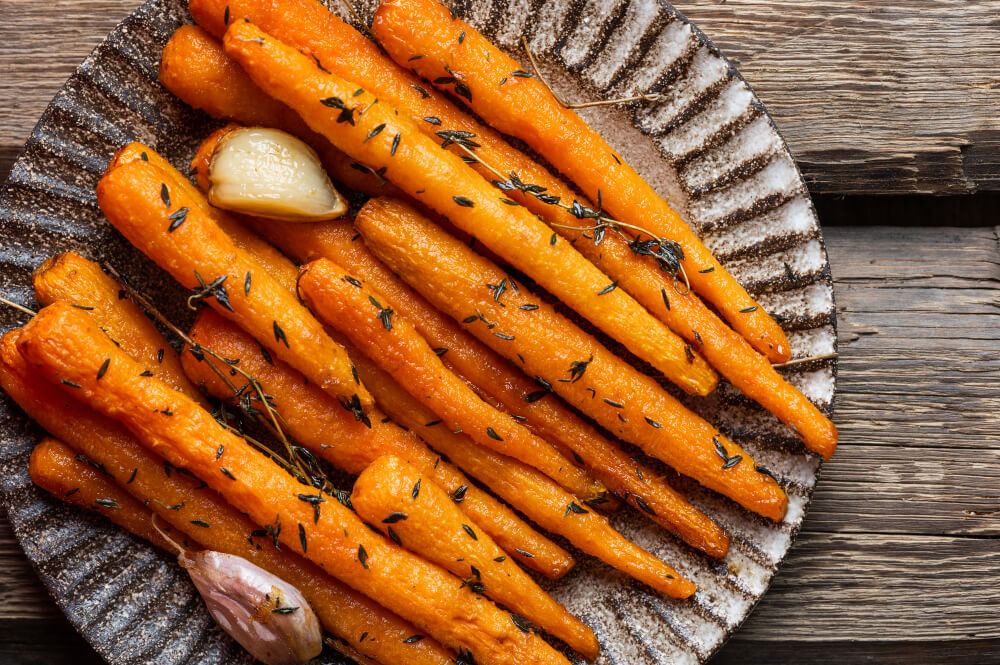
When it comes to meat cuts, there are few as prized and delicious as the brisket deckle. But what exactly is it, and how can you use it in different recipes? The brisket deckle refers to the fat cap that sits atop the whole brisket, a cut of meat that comes from the breast of the cow. Butchers separate the deckle from the meat, leaving a layer of flavorful fat that can be used in a variety of cooking methods, from smoking to grilling.
However, knowing how to trim and remove the deckle fat properly is important to get the most out of this cut. In this guide, we'll explore what the brisket deckle is, and what its label might mean, and share some different recipes and techniques you can use to cook this delectable cut of meat.
What is Brisket?
Let's talk about the brisket first. The term "brisket" refers to a cut of meat that is taken from the lower chest of the cow. This section of the animal is known for its tough and sinewy muscle fibers, which require a longer cooking process to become tender and flavorful. A packer brisket is the full cut of meat that includes both the flat and point sections, separated by a layer of fat and connective tissue known as the membrane.
Brisket Flat
The flat cut of brisket, also known as the "first cut," is leaner and has a more uniform shape. It is often preferred by those who like a more tender, less fatty meat.
Brisket Point
The point cut, on the other hand, is a fattier, more irregularly shaped section of the brisket that is sometimes referred to as the "nose." It is usually more flavorful and has a thicker bark than the flat cut.
Some people simply prefer one cut over the other, while others like to cook the full packer brisket and enjoy the different textures and flavors of both the flat and point sections. While the brisket can be a tougher cut of meat, the connective tissue breaks down during the cooking process, resulting in a tender and juicy finished product. So, whether you're smoking, grilling, or roasting your brisket, the key is to cook it low and slow to achieve the desired tenderness and flavor.
What is Brisket Deckle?
If you're familiar with brisket, you may have come across the term "brisket deckle" before. The deckle is a little bit of a mystery to some, but generally, it refers to the layer of fat that runs deep on the top side of the brisket. This fat cap is generally removed before cooking, but in practice, some pitmasters choose to leave it on for added flavor and moisture.
If you do come across brisket deckle in packaging or at a butcher shop, it may also be labeled as "deckle fat" or "point fat." It's a thinner layer of fat than what you might find on the regular fat cap, but it can still add a lot of flavor to your finished product. Especially if you're smoking your brisket, the deckle can turn into a delicious bark that adds an extra layer of depth to each slice.
So, while the deckle may be a little bit of a mystery to some, it's a practice that many pitmasters swear by. Whether you choose to remove it or leave it on, the key is to let your brisket cook low and slow to achieve that sought-after tenderness and flavor.
Should Deckle be Removed? Factors to Consider

Now to help you decide whether the deckle should be removed, there are several factors to consider.
Cost
Firstly, cost may come into play as deckle-on brisket is probably going to be more expensive than deckle-off brisket. If you're buying by the pound, that inch or two of deckle can quickly add up. While deckle-on brisket may be more expensive, it can also be a higher-quality cut of meat. It's important to weigh the cost against the potential flavor and quality benefits of leaving the deckle on.
Flavor
Flavor is also a factor, as the deckle can connect with the meat to add an extra layer of taste to your barbecue. The deckle can add a unique flavor profile to your brisket. It's a fattier cut of meat that can melt into the meat, creating a deliciously rich and juicy taste. However, some people may find the flavor to be too rich or overpowering. It's important to consider your personal taste preferences when deciding whether or not to remove the deckle.
Convenience
Convenience is another consideration, as removing the deckle can be a bit of a hassle. It's an extra step that some may not want to take. Removing the deckle can be a bit of a hassle, but it may be worth it if you're looking for a leaner cut of meat. Keep in mind that removing the deckle will add extra time and effort to your cooking process. If you're short on time or prefer a more hands-off approach to cooking, then leaving the deckle on may be a better option.
Moist or Lean
Moist or lean preference is something to consider too, as the deckle can add a bit of moisture to the meat. The deckle is a fattier cut of meat, which can add moisture and flavor to your brisket. However, if you prefer a leaner cut of meat, then removing the deckle may be the way to go. Leaner cuts of meat can be healthier and easier to digest, but they may not have the same level of flavor as a deckle-on brisket.
So, if you can't tell if the deckle is worth it or if you just want to earn your barbecue stripes, you'll want to remove it. That's not to say that a deckle-on brisket can't be delicious, but it's all a matter of taste and preference.
How to Tell Whether the Deckle Has Been Removed?

If you're unsure whether the deckle has been removed from your brisket, there are a few ways to tell.
- The easiest way is to look for a layer of fat on the brisket. The deckle is a fatty layer of meat that runs along the top of the brisket, and if it has been removed, there will be a noticeable absence of fat. If you can't find any fat, then it's likely that the deckle has been removed.
- Another way to tell is to look for cut marks on the brisket. If the deckle has been removed, you may see where the butcher cut it away from the natural seam. This can be a telltale sign that the deckle has been removed.
- Finally, many briskets will be labeled "deckle off" or "deckle removed" to make it clear to buyers. If you're unsure whether the deckle has been removed, look for this labeling on the packaging or ask the butcher directly.
By understanding how to tell whether the deckle has been removed, you can make an informed decision about the type of brisket you want to buy and cook. Whether you prefer a leaner cut of meat or a fattier, more flavorful option, knowing how to identify the presence of the deckle can help you achieve the perfect results every time.
Beef Deckle Recipes to Try
If you're looking to try out some delicious beef deckle recipes, here are a few options to get you started.
Braised Deckel With Onions
-
2-3 lb beef deckle
-
2 onions, sliced
-
2 cups beef broth
-
1/4 cup red wine
-
Salt and pepper
-
Olive oil
Instructions:
-
Preheat your oven to 325°F.
-
Heat a large Dutch oven over medium-high heat and add a drizzle of olive oil.
-
Season the beef deckle with salt and pepper and sear it in the Dutch oven until browned on all sides. Remove from the pot and set aside.
-
Add the sliced onions to the pot and cook until softened, about 5 minutes.
-
Add the beef broth and red wine to the pot and stir to combine.
-
Return the beef deckle to the pot and cover with a lid.
-
Transfer the Dutch oven to the oven and braise the beef for 2-3 hours or until tender.
-
Let the beef rest for 10 minutes before slicing and serving.
Braised Beef Chuck Deckle with Mustard
-
2-3 lb beef chuck deckle
-
2 tbsp Dijon mustard
-
2 tbsp honey
-
2 cloves garlic, minced
-
2 cups beef broth
-
Salt and pepper
-
Olive oil
Instructions:
-
Preheat your oven to 325°F.
-
Heat a large Dutch oven over medium-high heat and add a drizzle of olive oil.
-
Season the beef chuck deckle with salt and pepper and sear it in the Dutch oven until browned on all sides. Remove from the pot and set aside.
-
In a small bowl, whisk together the Dijon mustard, honey, and minced garlic.
-
Add the beef broth to the pot and stir in the mustard mixture.
-
Return the beef chuck deckle to the pot and cover with a lid.
-
Transfer the Dutch oven to the oven and braise the beef for 2-3 hours or until tender.
-
Let the beef rest for 10 minutes before slicing and serving.
Honey Garlic Glazed Corned Beef
-
2-3 lb corned beef deckle
-
1/2 cup honey
-
2 cloves garlic, minced
-
1/4 cup Dijon mustard
-
Salt and pepper
Instructions:
-
Preheat your oven to 325°F.
-
Place the corned beef deckle on a wooden cutting board and season with salt and pepper.
-
In a small bowl, whisk together the honey, minced garlic, and Dijon mustard.
-
Brush the honey garlic glaze over the corned beef deckle, making sure to coat it evenly.
-
Transfer the corned beef deckle to a baking dish and cover with foil.
-
Bake the corned beef for 2-3 hours or until tender.
-
Remove the foil and brush the corned beef with any remaining glaze.
-
Return the corned beef to the oven and bake, uncovered, for an additional 30 minutes.
-
Let the corned beef rest for 10 minutes before slicing and serving.
Whether you're getting a deckle-on or deckle off brisket, these beef deckle recipes are sure to impress. From braised beef to honey garlic glaze, there's something for everyone to love. So grab your wooden cutting board and get cooking!
FAQs
Is brisket deckle tender?
Deckel is a unique cut of beef that comes from the shoulder of the steer. While it is a leaner alternative to brisket, it does require a bit of care and attention to bring out its tender, succulent goodness. Unlike other cuts of meat, deckel must be braised or low-roasted to achieve the desired level of tenderness. By taking the time to properly prepare deckel, you will be rewarded with a flavorful and satisfying meal that is sure to delight your taste buds. So if you're looking to try something new in the kitchen, consider giving deckel a try and experience the delicious flavor and tender texture for yourself.
What is the difference between deckle and brisket?
When it comes to beef, brisket is a popular cut that many people enjoy. However, it's important to note that brisket is made up of two different muscles: the point and the flat. The point cut is the fattier part of the brisket, and it includes what is known as the deckle. On the other hand, the flat cut, also known as the "first cut," has the deckle removed, which makes it leaner and causes it to lay flat. So while both cuts are delicious in their own way, the presence or absence of the deckle can make a significant difference in terms of flavor and texture. Whether you prefer a fattier, more flavorful cut or a leaner, flatter one, there's a brisket out there that's sure to satisfy your taste buds.
Conclusion
In conclusion, brisket deckle is a unique and flavorful cut of beef that can be used in a variety of different recipes. Whether you prefer to braise it or low-roast it, this cut is sure to offer a tender and succulent experience that will leave your taste buds wanting more. So why not give brisket deckle a try and see how it can enhance your culinary creations? With so many different recipes to choose from, you're sure to find a dish that will satisfy your cravings and impress your guests.



